Introduction
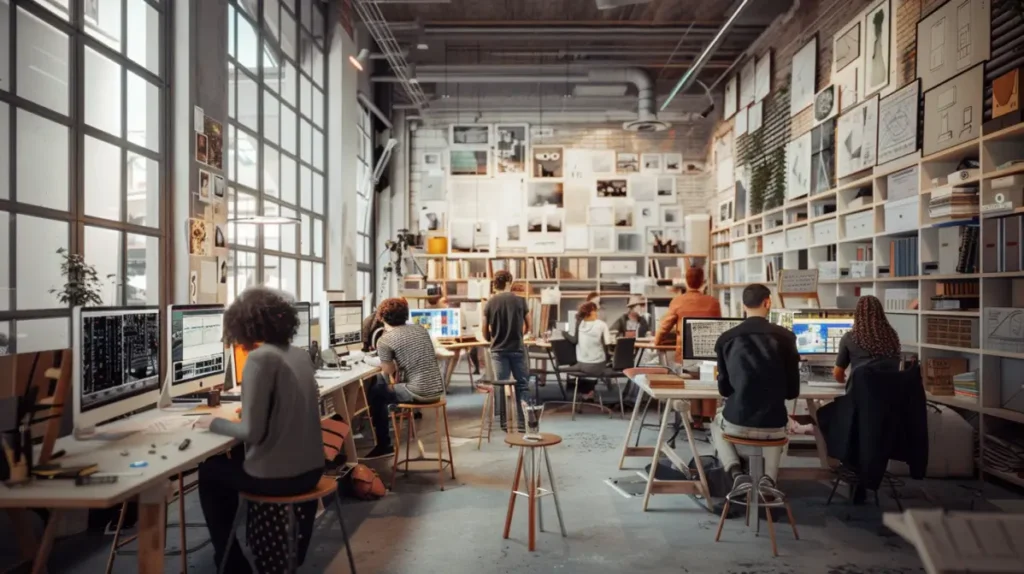
In the vibrant tapestry of the creative industries, the role of the art director stands out as a linchpin, harmonizing the elements of visual storytelling and brand identity into a cohesive narrative that speaks volumes. Within the realms of advertising, publishing, and digital media, these visionaries wield the power to not only conceptualize but also bring to fruition ideas that captivate, engage, and resonate with audiences on a profound level. Their leadership transcends the mere aesthetic, embedding itself deep within the strategic objectives of a project, ensuring that every creative decision amplifies the brand’s voice and propels its message across the digital and traditional spectrums.
For employers focused on securing top-tier talent with minimal delay, we offer direct access to a comprehensive job description template for Art Directors based on the best practices of C9Staff. Download it here to ensure your hiring process is as efficient and effective as possible.
Art Director Job description template

Yet, the journey to becoming an art director, or seeking to hire one, is nuanced with complexities that demand a deeper understanding of the role’s essence and its critical impact on project success and team dynamics. This article aims to unravel these complexities by offering a dual lens through which both potential candidates and employers can view the art director position. For employers, it is a guide to drafting precise and appealing job descriptions that not only capture the multifaceted essence of the role but also attract the right talent. For aspiring art directors, it presents a roadmap to navigating their career path, understanding job market expectations, and refining the skills essential for excelling in these transformative positions.
As we commence on this explorative journey, you will gain comprehensive insights into defining the art director role, appreciating its requirements and the transformative impact it has within the creative sectors. Through a blend of expert advice, industry trends, and success stories, this article promises an enlightening voyage into the heart of creative excellence, where the art of direction meets the science of strategic thinking.
Behind the Scenes: Unveiling the Creative Force of Art Directors
The Art Director Unveiled
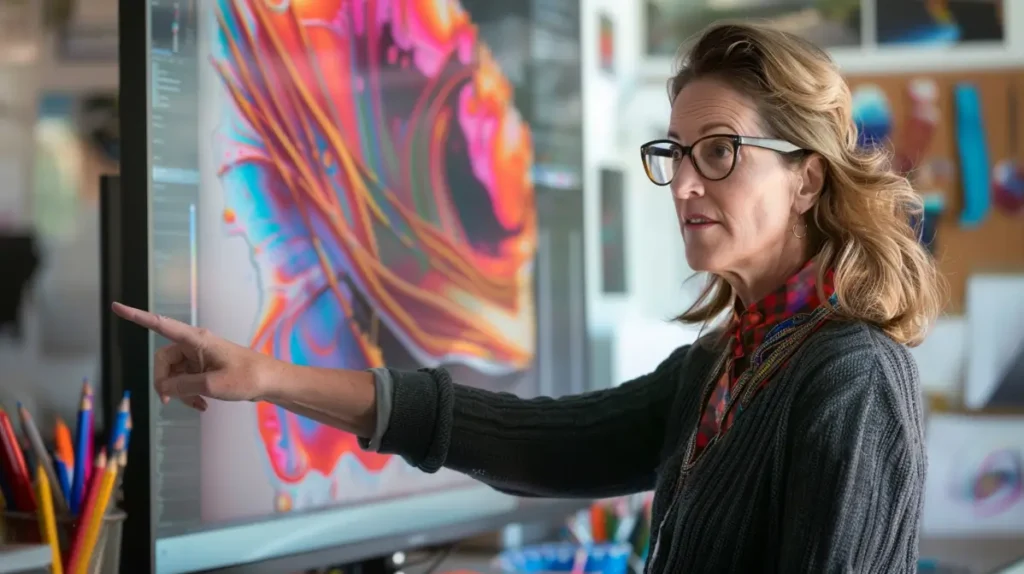
In the dynamic realms of advertising, publishing, and digital media, the art director emerges as a pivotal figure, seamlessly blending creative vision with strategic oversight to guide projects from inception to fruition. The role of an art director transcends traditional boundaries, serving as a creative linchpin across a variety of media platforms. Their responsibilities extend from the conceptualization of creative ideas to the meticulous execution of those ideas, ensuring that every project resonates with its intended audience while upholding the brand’s identity.
The essence of an art director’s role lies in their ability to lead and inspire creative teams. This involves making crucial design decisions and maintaining a cohesive visual identity across all campaign materials. Art directors are tasked with the creation of compelling narratives that not only engage audiences but also enhance the brand’s presence in the market. They navigate the delicate balance between artistic intuition and the strategic goals of a project, weaving brand stories that find a place in the hearts and minds of consumers.
The impact of an art director on both creative projects and team dynamics cannot be overstated. Their leadership fosters an environment where collaboration and innovation flourish among designers, writers, and other creative professionals. By setting a strategic direction that aligns with the company’s broader objectives, art directors play a crucial role in shaping marketing strategies and engaging consumers in meaningful ways in the digital age.
Moreover, the evolution of the art director role reflects the changing landscape of the creative industries. Digital advancements and shifts in consumer behavior have expanded the scope of their responsibilities, necessitating a diverse skill set that encompasses not only traditional design principles but also proficiency in digital tools and an understanding of online consumer engagement. This evolution underscores the need for art directors who are not only creatively adept but also strategically minded, capable of navigating the complexities of today’s digital and traditional media environments.
Understanding the multifaceted role of art directors sets the foundation for employers crafting detailed and attractive job descriptions aimed at securing top talent. It also provides aspiring art directors with insights into the competencies and attributes necessary to excel in this dynamic field. The journey of an art director, characterized by continuous learning and adaptation, mirrors the ever-evolving nature of the creative industries they navigate.
For Employers: Crafting the Perfect Job Description
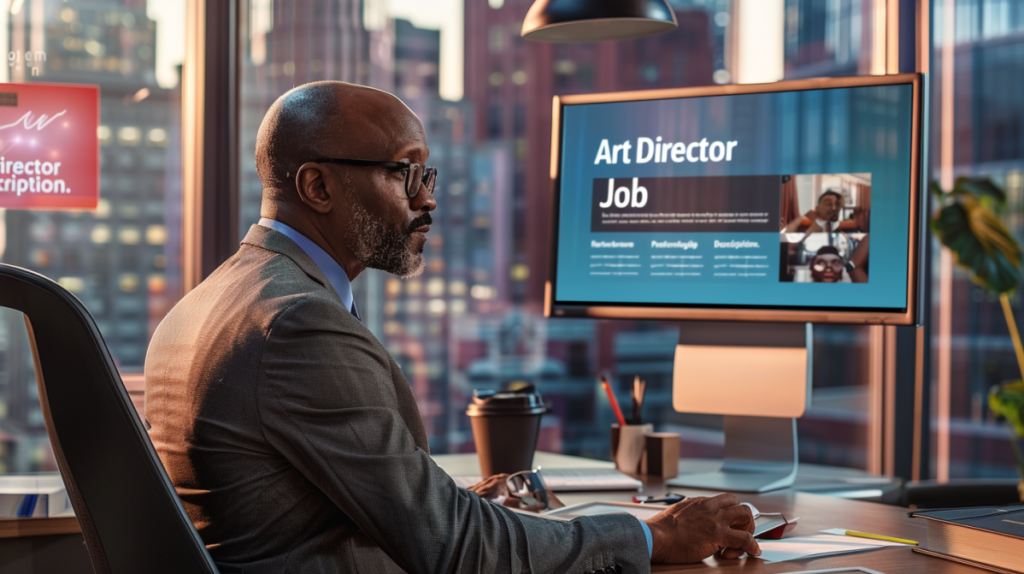
Creating the perfect job description for an art director role requires a nuanced understanding of the position’s unique blend of creativity, leadership, and strategic thinking. Below is a comprehensive guide structured into three crucial subsections to help employers navigate the process effectively.
The Significance of a Clear and Comprehensive Job Description: A well-crafted job description is pivotal in attracting the right talent. It serves as the first point of contact between your organization and potential candidates, providing them with a clear understanding of the role’s responsibilities, expectations, and the impact they will have within your team. An accurate depiction of the art director role ensures that candidates with the requisite skills and cultural fit are drawn to apply, thereby streamlining the recruitment process.
Defining the Art Director Role within Your Organization: The art director is key to driving creative projects to success. They oversee the visual aspects of advertising and marketing campaigns, coordinate the work of other creative team members, and ensure that the finished products align with client or internal brand standards. Highlighting the significance of their contribution to team dynamics and project outcomes in the job description emphasizes the role’s importance.
Attracting the Right Talent
Key Qualifications and Experiences: Ideal candidates for the art director position typically have a robust portfolio that showcases a wide range of projects, from print to digital media. Essential qualifications may include a degree in art, graphic design, or a related field, alongside extensive experience in creative roles with increasing responsibility. Look for evidence of leadership experience, project management skills, and a history of successful collaboration with cross-functional teams.
Balancing Technical Skills and Cultural Fit: While technical skills are crucial, finding a candidate who aligns with your company’s ethos and values is equally important. The job description should reflect both the hard skills required for the role, such as proficiency in Adobe Creative Suite, and soft skills like creativity, adaptability, and communication. Highlighting these attributes can attract candidates who not only have the right expertise but also share your organization’s vision and work culture.
Setting Your Team Up for Success
The Transformative Impact of an Art Director: Art directors play a critical role in shaping the creative output of their teams. They inspire and motivate, fostering an environment where creativity and innovation can flourish. Their strategic vision ensures that projects not only meet creative standards but also align with broader business objectives.
Tips for Integrating the Art Director Role within Existing Teams:
- Define Clear Roles and Responsibilities: Ensure that each team member understands how their work contributes to the project’s overall success.
- Encourage Collaboration: Promote an inclusive atmosphere where ideas can be freely shared and explored.
- Invest in Team Building: Regular team-building activities can strengthen relationships and improve communication among team members.
- Provide Professional Development Opportunities: Enable art directors and their teams to stay current with industry trends and technologies.
In crafting your job description, remember that clarity, comprehensiveness, and authenticity are key to attracting the right candidates. By effectively communicating the responsibilities, expectations, and opportunities the art director role offers, you set the stage for attracting individuals who are not just capable but also passionate about driving creative excellence within your organization.
For employers focused on securing top-tier talent with minimal delay, we offer direct access to a comprehensive job description template for Art Directors based on the best practices of C9Staff. Download it here to ensure your hiring process is as efficient and effective as possible.
Art Director Job description template

For Candidates: Navigating the Path to Becoming an Art Director
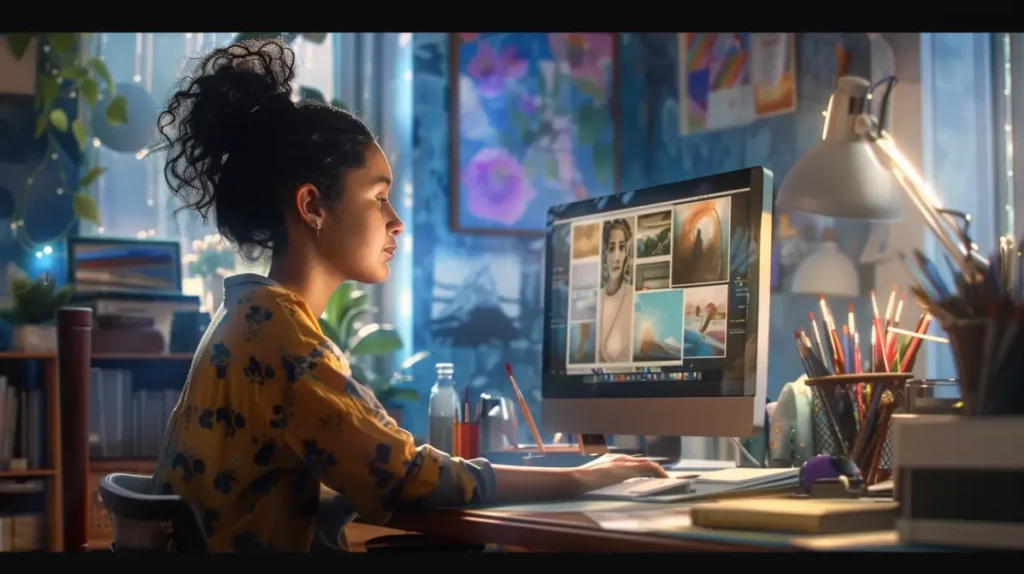
Aspiring to become an art director is a journey filled with creativity, leadership, and continuous learning. To guide you on this path, let’s delve into a structured approach that encompasses self-assessment, portfolio building, and career development strategies.
Assessing Your Fit
Self-Reflection: Begin by taking stock of your current skills and experiences. Compare these against the typical requirements for art directors, which often include a blend of creative design skills, project management experience, and the ability to lead a team. Reflect on your educational background—degrees in graphic design, fine arts, or related fields are common. Evaluate your professional experiences, especially those that involved overseeing creative projects or collaborating with teams. Don’t overlook your innate creative talents; these are just as important.
Strategies for Self-Assessment:
- List Your Skills: Write down all your relevant skills and experiences, then match them against job listings for art directors. Note any gaps.
- Seek Feedback: Ask colleagues or mentors for their honest assessment of your strengths and areas for improvement.
- Engage in Self-directed Projects: If you find gaps in your skill set, consider personal projects or freelance work that can help you gain experience in those areas.
Building Your Portfolio
A portfolio is your visual resume and the cornerstone of your application for art director roles. It should reflect your best work, demonstrating your ability to lead creative projects and stay ahead of industry trends.
Tips for Curating Your Portfolio:
- Diversify Your Projects: Include a variety of projects that showcase your skills in different media—digital, print, and beyond. Highlight your role in these projects to demonstrate leadership and creativity.
- Emphasize Brand Storytelling: Select projects that show your ability to convey a brand’s message through visual storytelling effectively.
- Stay Current: Regularly update your portfolio with new work that reflects current trends and your evolving skill set.
Preparing for the Role
Networking and continuous learning are crucial in the art director’s career path. They help you build relationships, stay current with industry trends, and position yourself as a desirable candidate.
Strategies for Career Development:
- Build Professional Relationships: Attend industry events, join professional organizations, and connect with peers and mentors on social media.
- Engage in Lifelong Learning: Take advantage of online courses and workshops to learn new tools and creative methodologies.
- Find Mentorship Opportunities: A mentor who is experienced in the creative industry can provide invaluable guidance and insights.
Positioning Yourself as a Standout Candidate:
- Articulate Your Vision: Be able to clearly explain your creative vision and how it aligns with potential employers’ brands.
- Showcase Your Leadership: Highlight experiences where you’ve led teams or projects, demonstrating your ability to inspire and manage creative talents.
- Tailor Your Applications: Customize your resume and portfolio for each application, emphasizing the skills and experiences most relevant to the position.
Commencing on the journey to become an art director is both challenging and rewarding. By assessing your fit for the role, building a strong portfolio, and engaging in continuous learning and networking, you position yourself for success in this dynamic career path. Remember, the key to becoming an exceptional art director lies in your ability to innovate, lead, and inspire creative excellence.
Are you ready to supercharge your career and land your dream job? C9Staff invites you to explore the exciting opportunities we offer. Simply click the link below and submit your resume to our talent acquisition team. If your qualifications align with our client’s needs, we will contact you to discuss potential opportunities tailored to your expertise and career aspirations. Don’t miss out—take the first step towards transforming your professional journey today!

From Vision to Reality: A Yearlong Journey to Becoming an Art Director
Industry Trends and Innovations
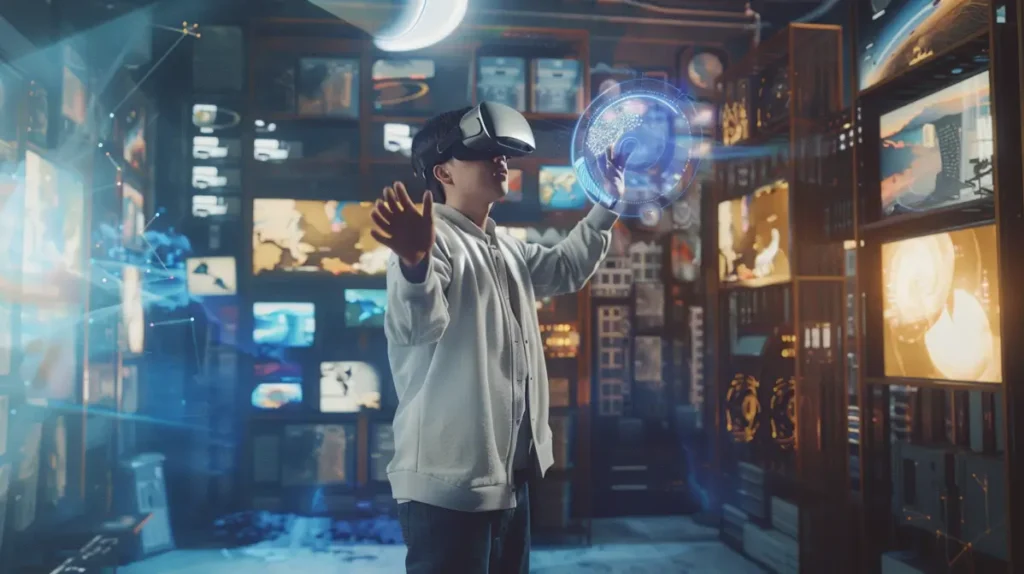
The creative industry is witnessing a transformative shift, largely driven by rapid digital advancements, altering the fundamental role of art directors. This shift is not merely technological but also conceptual, reshaping how art directors engage with projects from inception to execution.
Digital Advancements Revolutionizing the Role of Art Directors
The integration of Artificial Intelligence (AI) and Virtual Reality (VR) into the creative process is at the forefront of this revolution. AI is enhancing creative efficiency and expanding the boundaries of personalization. It aids in automating mundane tasks, allowing art directors to focus on the creative aspects of projects. AI-powered tools can generate preliminary design concepts, analyze user engagement data to guide the creative direction, and even predict trends.
Virtual Reality (VR) introduces a new dimension to storytelling, offering immersive experiences that were previously unimaginable. Art directors are now tasked with not only understanding these technologies but also incorporating them into their creative arsenal to produce groundbreaking work.
Shifting Consumer Behaviors and Their Impact
The rise of social media has significantly influenced consumer expectations, demanding more personalized and interactive content. This requires art directors to adopt a more agile and responsive approach to content creation, one that not only captures attention but also fosters engagement and connection with the audience.
Consumers’ appetite for authenticity and stories that resonate on a personal level challenges art directors to innovate beyond traditional advertising. This involves a deep dive into data analytics, understanding the nuances of various social platforms, and leveraging user-generated content to craft campaigns that speak directly to the consumer’s experiences and aspirations.
Navigating the Evolving Landscape
The evolving landscape presents a dual challenge and opportunity for art directors. On one hand, keeping pace with technological advancements and changing consumer preferences can be daunting. On the other, these shifts open up new avenues for creative exploration and engagement.
Continuous learning and adaptability are crucial for art directors to remain relevant. This entails staying abreast of the latest tools and technologies, understanding the dynamics of digital marketing, and fostering a culture of innovation within creative teams.
Art directors must also cultivate a strategic mindset, viewing each project not just as a creative endeavor but as an integral part of the brand’s overarching narrative and marketing objectives. This strategic approach, coupled with a commitment to pushing creative boundaries, positions art directors as key drivers of brand success in the digital age.
Looking to elevate your team with the perfect art director? C9Staff is here to streamline the process for you. Click the link below to schedule a free exploratory call with one of our expert account managers. During this call, we’ll listen intently to your specific needs and recommend top-tier candidates, absolutely free, to help you assess the best talent available at competitive prices. Don’t miss this opportunity to enhance your organization with a skilled professional who truly fits your vision.

Conclusion

As we conclude our comprehensive exploration of the art director role, it’s essential to reflect on the pivotal position these professionals hold within the creative industries. Art directors stand at the crossroads of creativity, strategy, and leadership, guiding their teams through the complexities of modern advertising, publishing, and digital media. Their visionary leadership is not just about pushing creative boundaries; it’s about navigating a path that aligns with both the brand’s identity and the audience’s expectations.
The journey of an art director is twofold, involving both the employers who seek to define this role within their organizations and the candidates aspiring to fill it. For employers, the challenge lies in crafting job descriptions that encompass the depth of the art director’s responsibilities—descriptions that go beyond mere qualifications and skills to capture the essence of creativity and innovation that defines the role. For candidates, it’s about aligning their skills and aspirations with these expectations, a journey marked by continuous learning and personal growth.
The essence of success in this dynamic field hinges on clear and open communication between employers and candidates. It’s about creating a mutual understanding that goes beyond the confines of job descriptions and resumes. Employers are called upon to invest thoughtfully in their job listings, ensuring they inspire and resonate with potential art directors. Candidates, in turn, are encouraged to pursue their artistic and leadership potentials with determination, viewing their career as a lifelong journey of innovation and discovery.
This exploration serves as a bridge, connecting the insights gleaned from both perspectives to a forward-looking vision for the art director role. It’s a call to action for both parties to engage with this role more thoughtfully, recognizing its crucial contribution to the success and evolution of the creative industries. By doing so, we not only celebrate the achievements of art directors but also inspire the next generation of creative leaders to push the boundaries of what is possible.




